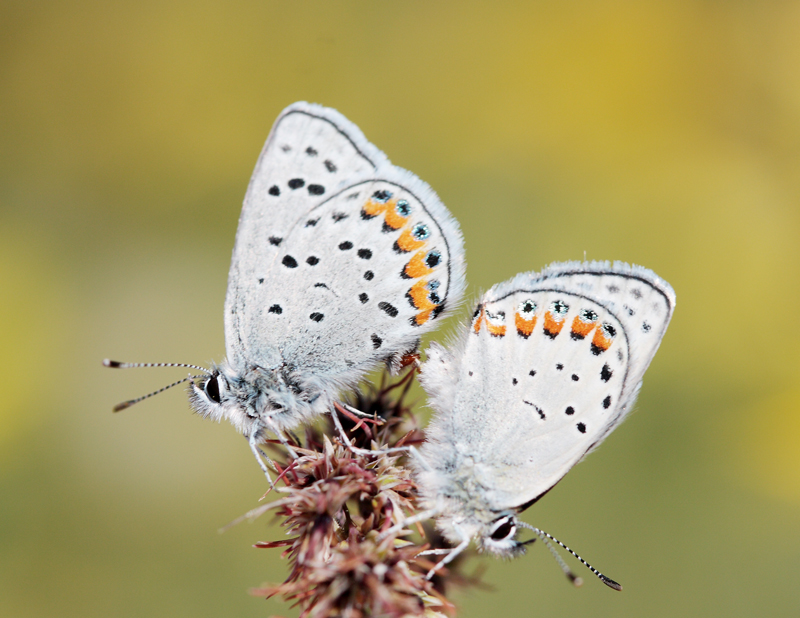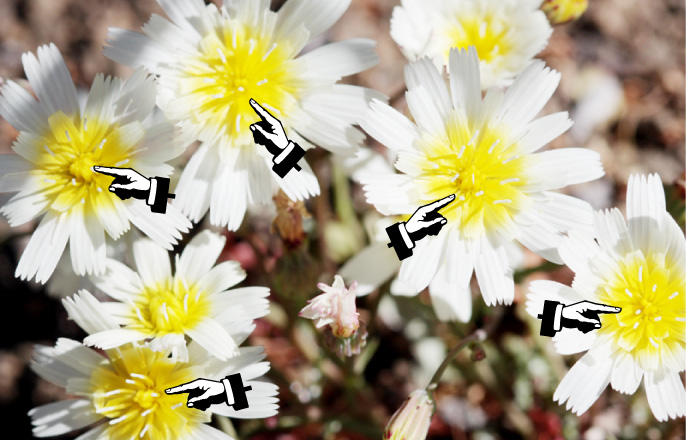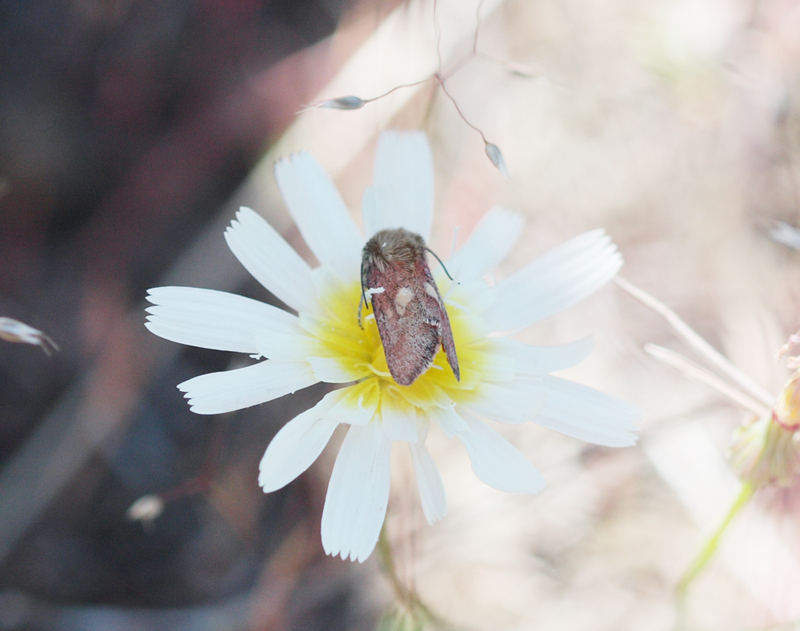لأربعة عطلة نهاية الأسبوع الماضية الآن لقد كنت على مطاردة أوزة, لفراشة واحدة, هيليولونش سيليريس. انها Noctuidae صغيرة جميلة مع forewings ردي وhindwings البرتقالي والاحمر مذهلة. لا يتم مواجهتها كثيرًا ولا توجد إلا على طول سلاسل جبال شمال كاليفورنيا التي تتغذى عليها Malacothrix floccifera – زهرة CA المستوطنة. في كل رحلة أخطأت فيها, حتى اليوم – جمعت اثنين! كما قد تتذكرون ، كانت أول نزهة لي قبل حوالي شهر, لا فراشة, ولكن سلسلة جميلة من العينات و صور عديلة العث. لم تقترب الرحلات القليلة الماضية من أن تكون منتجة مثل رحلة أديلا. إذن ماذا تفعل عندما لا تجد هدفك? احصل على حروق الشمس والتقط بعض الصور الرديئة.
(تابع أدناه)
ليس عثة تماما.
لحظة واحدة!
هذه ح. سيليريس يُظهر سلوك عثة الزهرة النموذجي, جالسًا على رأس الزهرة عاديًا كالنهار. هم في الواقع يبقون هكذا طوال الليل على الزهرة (حتى لو كانت مغلقة من حولهم كما تفعل بعض الزهور – مما يؤدي إلى تسميتها بالعامية “عث تاكو”… لأن مؤخرة العثة تلتصق بالبتلات وتبدو وكأنها في تاكو). وهذا هو بالضبط سبب مغادرتي لشقتي في 6 صباحا هذا الصباح لأصل 8. إذا كان الجو لا يزال باردًا ، فلن يرتعشوا حتى عند الاقتراب. و, إذا لم يطيروا, من السهل مسح منطقة ما بحثًا عن العث ومعرفة أنك لم تفوت أيًا منها. لكن, بمجرد أن تدفئهم الشمس, يصبحون أوغادًا رشيقين ويختفون قبل أن تتمكن حتى من الوصول إلى غطاء العدسة. لكوني أول فراشة رأيتها اليوم لم أبذل جهدا لالتقاط صورة رائعة. الموضوعات لديها عادة سيئة وهي الطيران بعيدًا بعد أن تحصل على اللقطة الجيدة (حسنا, عادة مباشرة قبل التسديدة الجيدة)… ولا يمكنني المخاطرة بفقدان النموذج الوحيد لليوم.





Where’s the “like” button? Great pics and good commentary.
“لا فراشة, لا فراشة, no moth…”
Ha. I lol’d.
It is a pretty little thing…
A colorful, day-flying moth that sits prominently in the center of flowers – chemical defenses?
هذا سؤال جيد, and it has crossed my mind before. There a lot of these small day flying flower moths that are clearly not cryptic yet I haven’t ever read about any chemical defenses or mimicry. I also don’t think of Malacothrix as a particularly noxious plant… will investigate.
تمام, now I have to post the latest mystery moth pics I took a few days ago. (4/30) Pretty please if you have a moment, check it out and render your sage opinion. !
Ted’s question has nagged me this week. I’ve never heard of anyone studying this, لكن… Has anyone seen these flower moths under UV? See a related flower species under UV here: http://www.naturfotograf.com/UV_SENE_AQU.html. يمكن, while sitting on the bulls-eye, these moths become “invisible” to predators who see UV, such a birds. The added bonus for the moths is this might increase their chances of finding a mate which is attracted to the UV bulls-eye.
You have to be right about that Katie, I’ve been thinking about this too. I can’t recall any literature in reference to adult insect UV crypsis. There is some work in regards to caterpillars… but I’ll have to do some more digging. Birds are probably not the primary predator on these moths since their acute vision makes them incredibly difficult to approach in the daytime. لكن, most lizards see in UV and these flowers are just about at head level for most small reptiles (and there were a ton on site).
بعض الأحيان, the light bulb just turns on.
So there is a monograph to this subfamily – and in there Hardwick (author) points out the counterintuitive crypsis of this moth! Instead of a good idea he postulates
هكذا, he just assumes they are oddities because the flowers changed without them and they survived “possibly because of a decrease in predation pressure”.
Seems to me that UV crypsis is much more likely. و… I don’t believe that’s been shown in adult Lepidoptera. Add it to the list!
; ) Just make sure you credit me for this idea when you become the ruler of the universe, er… recognized expert on lepidopteran UV crypsis. I’m glad you looked it up. Please let me know if you find out any more info.